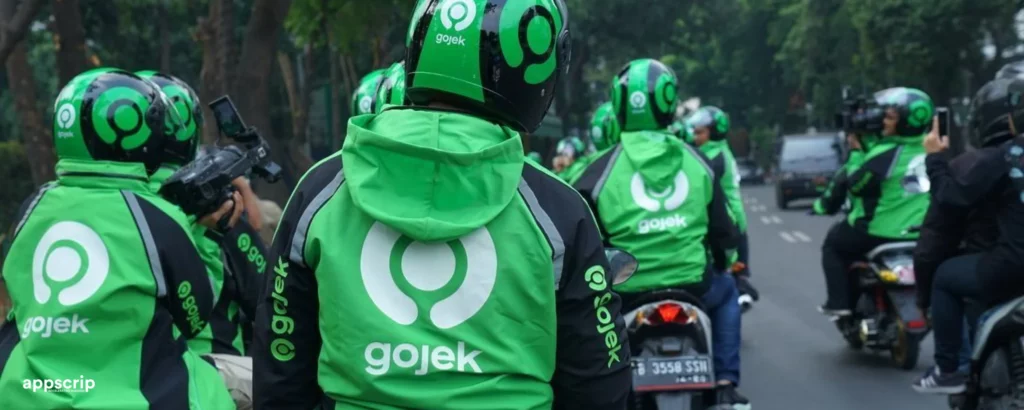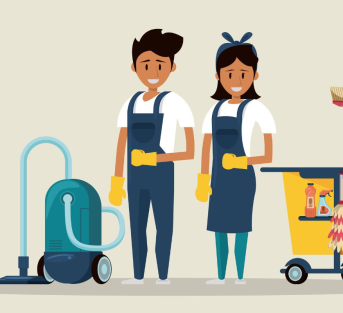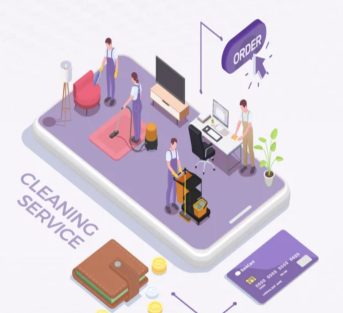Super apps are basically the Swiss army knives of the mobile world. Instead of downloading 10 different apps to handle transport, food delivery, payments, messaging, and more, users get one single app that does it all. That’s what makes super apps so popular, especially in mobile-first regions.
The idea first gained traction in Asia. Think WeChat in China or Gojek in Indonesia. According to Grand View Research, the global super app market was valued at $76.5 billion in 2023 and is expected to hit $426 billion by 2030. That’s a huge jump, with a projected growth rate of nearly 28% per year.
People want less friction. Businesses want stickier user engagement. Super apps hit both goals in one go.
TL;DR
- Super apps combine multiple everyday services—rides, food, payments, and more—into one seamless platform, making life easier for users.
- Gojek started with a simple ride-hailing solution and scaled to over 20 services by solving real daily problems. It now serves millions across Southeast Asia under the GoTo Group.
- Key features of a super app include an intuitive interface, integrated services, secure payments, real-time tracking, and strong customer support.
- Building a super app involves careful planning: researching user needs, picking the right tech, designing smooth UX, and testing thoroughly.
- Super apps make money through service commissions, subscription plans, ads, transaction fees, and financial products like microloans.
- Challenges include staying compliant with regulations, protecting user data, maintaining app performance, and keeping the experience simple as it scales.
- The future of super apps points to AI personalization, fintech expansion, blockchain integration, and even business-facing services.
Appscrip offers a pre-built super app solution to help businesses launch faster and scale smarter—ideal for brands ready to build their own all-in-one platform.
Gojek: From Jakarta Startup to Southeast Asian Super App
In 2010, Gojek began as a modest call center in Jakarta, aiming to simplify the process of booking ojek rides (motorbike taxis). At that time, Indonesia lacked ride-hailing apps, and hailing a ride often involved waiting on busy street corners. Gojek’s initial solution, GoRide, addressed this common urban challenge by connecting users directly with ojek drivers.
Recognizing additional daily challenges faced by their users, Gojek expanded its services to include:
- GoFood: Launched to deliver meals to users, catering to those stuck in traffic or busy at work.
- GoSend: Provided a courier service for quick and reliable parcel deliveries.
- GoPay: Introduced a digital wallet facilitating seamless cashless transactions.
- GoMassage and GoGlam: Offered on-demand wellness and beauty services directly to users’ homes.
This strategic diversification transformed Gojek from a simple ride-hailing service into an indispensable part of daily life for many Indonesians.
By 2020, Gojek had evolved into a platform offering over 20 services, becoming Indonesia’s first unicorn and a prominent tech brand in Southeast Asia.
In 2021, Gojek merged with e-commerce platform Tokopedia to form GoTo Group, integrating transportation, payments, logistics, and online shopping into a cohesive ecosystem.
Recent financial performance highlights GoTo’s growth trajectory:
- Gross Revenue: In 2024, GoTo reported gross revenues of Rp18.1 trillion, a 30% increase from the previous year.
- Net Revenue: The same period saw net revenues reaching Rp15.9 trillion, an 8% year-over-year growth.
- Adjusted EBITDA: The company achieved an adjusted EBITDA of Rp386 billion in 2024, indicating improved profitability.
Gojek’s success can be attributed to several strategic decisions:
- Focused Beginnings: Starting with a single, essential service (GoRide) that addressed a clear market need.
- User-Centric Expansion: Continuously adding services based on genuine user requirements and feedback.
- Strategic Partnerships: Merging with Tokopedia to enhance service offerings and market presence.
- Cultural Alignment: Ensuring that services resonate with local customs and user behaviors.
Why Have Super Apps
The super app model is the need of the hour as a Statista report shows there are over four million apps available between Google Play store and the Apple App Store. A Super App or Gojek like app corrects this imbalance. By perching itself on the OS it shrinks the time to complete a specific task and increases productivity. It adds UX elements to make it customary for users to get accustomed to tasks at hand.
Super apps provide easy access to many different services, saves phone space, and frees users from having to hunt down lots of different apps for various services. But there are significant downsides when it comes to privacy and competition.
The trend is also picking up in Latin America. North American and European firms such as Facebook, Uber, and Amazon are planning to launch region based super apps. But a lot of super-app services already dominate the ecosystem and it won’t be easy for these tech giants to emulate WeChat.
Gojek was founded in 2010, and it quickly gained popularity among consumers due to its convenience and affordability. It has since expanded to multiple countries and has become one of the most successful super apps in the region.
How Super Apps Are Built
The success of Gojek and Gojek like app / super apps can be attributed to several factors. Firstly, they offer a wide range of services, making them a one-stop-shop for many consumers. This convenience has made them popular among busy urban populations.
Secondly, super apps often use advanced technology to enhance the user experience, such as real-time tracking and personalized recommendations. This has helped them stand out from traditional service providers and attract a large user base.
To build a super app or Gojek like app you begin with a core product that is high on engagement and then build more use cases.
Demand Side Economies
When Wechat started operations offering chat facility the value increased with each new user. After they hit critical mass of users they focussed on monetisation. Then businesses got listed on Wechat and with WeChat Pay they started C2C payments and later launched e-commerce. You need a critical mass of users to drive C2C transactions while businesses and users are required to drive B2C transactions.
Here it is the demand side economies of scale at work where value of the product/service improves with the addition each new user to the network.
These principally exist where networks are imperative, as in online games, dating sites and social networks. Because more users they have in their network, the more valuable their service becomes.
Benefits of developing a huge network will not only win more customers but they now can charge customers / advertisers more. And new businesses that come into the market cannot prey on your market share.
Supply Side Economies
The other way to build a super app is taking into consideration the supply side economy of scale as in Uber, Gojek, Lyft, or Swiggy.
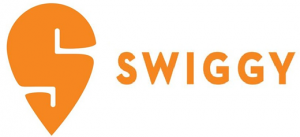
This is difficult to defend. As in bank ATMs. Supposing you utilize Citibank as they have ATMs everywhere. It makes no difference if you are their only customer.
If a new competitor wants to rival Citibank, they can launch as many ATMs – expensive, but possible. Supply-side economies of scale can be bought. But, demand-side networks cannot be bought.
Uber does not have considerable network effects in the traditional sense like Swiggy. Each new user helps improve the economics/utilization but does not create a lock in as in traditional networks.
In Uber more drivers help reduce wait time but diversity in supply does not matter to you. But with Swiggy each new restaurant enhances diversity leading to more choices. The price, delivery time and number of food options matter. More competition means – optimal pricing.
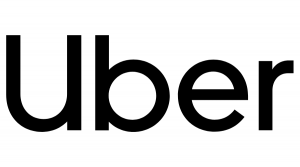
So you have traditional network effects and see prices go down because of competition in supply. Restaurants affiliated to Swiggy do. Drivers affiliated to Uber don’t compete for bids and outbid others for rides.
Swiggy has been cranking it up with amazing consumer products to drive usage with Swiggy Pop, Swiggy Super, Swiggy Daily.
But more orders mean increased expenditure as incentives for driver’s goes higher which are not sustainable. Therefore you have to improve utilisation of drivers by building more use cases.
WeChat Phenomena

The current king of super apps is Tencent’s WeChat with more than a billion monthly active users, is a marvel that hasn’t been replicated.
With WeChat you can share media, be active on social media, book movie tickets, ride sharing, make payments, make video calls, carry out ecommerce and more. You can also create a corporate account. The best part – even government agencies use WeChat.
WeChat and Alipay its competitor are so frequently utilized for mobile payments that paying by cash or card is a challenge.
Stuff you can get done with WeChat / Alipay are mesmerising as in social and business chat, video calls, e-payments, social networking, ticketing, ride-hailing, gaming, financial services, delivery, flights, hotels, movie tickets, clinical appointments, dog grooming. You can even create games and apps inside WeChat and take advantage of the existing infrastructure for messaging and payments.
Other super apps in the making:
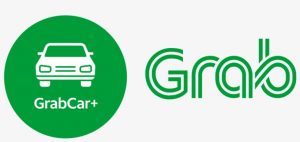
- Grab (Singapore and Southeast Asia): Southeast Asia’s very own successful start-up, they began with ride-hailing and now is being utilized for e-payments, food delivery, and other diverse services.
- Paytm (India): Backed by Alibaba (of Alipay), Paytm provides e-payments, financial services, ride-hailing, shopping, and host of other services in India.
- Rappi (Colombia and Latin America): This app began operations by connecting clients to couriers so as to pick-up and delivers pretty much anything. Now it is moving into e-payments, scooter sharing, and financial services.
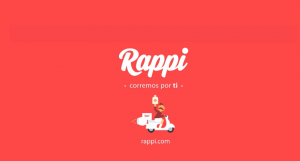
Then there’s Amazon, which is pursuing super app status in India by offering e-payments, flight bookings, ride-hailing, food delivery, and more directly or through companies acquired by them.
Essential Features of a Super App
Building a super app isn’t just about cramming a bunch of services into one interface. You want people to stick around, not bounce because they’re confused or overwhelmed.
Let’s break down what actually makes a super app work:
- Clean, simple interface: If the app feels crowded or chaotic, users will leave fast. Everything should be easy to find, whether it’s food delivery, your wallet balance, or recent transactions. Think fewer taps, clearer buttons, and zero guesswork.
- Multiple services under one roof: The biggest draw of a super app is convenience. Whether someone wants to book a ride, pay a bill, order groceries, or shop online, it should all happen without leaving the app. The more frequently used services you include, the more reasons users have to keep coming back.
- Built-in, secure payments: This is the engine of the app. Users should be able to pay instantly and safely whether they’re buying lunch, tipping a driver, or splitting a bill with a friend. The smoother and more trustworthy the payment flow, the better the retention.
- Live tracking and real-time updates: People don’t want to guess where their order is or wonder how long a ride will take. Real-time updates make the experience feel transparent and reliable. Push notifications, order progress bars, and ETA tracking all matter.
- Reliable customer support: With so many services in one place, things can (and will) go wrong. Whether it’s a missed delivery or a payment issue, users need a fast way to get help. In-app chat, clear help sections, and responsive ticketing systems keep users from getting frustrated.
What really ties this all together is consistency. The experience has to feel connected, not like a bunch of separate apps glued together.
Monetization Strategies of Gojek Like Apps
Super apps aren’t just about helping users get things done. They’re also money machines when done right.
- Commissions from service providers: This is one of the biggest income sources. Every time a driver completes a ride, a restaurant delivers a meal, or a cleaner finishes a booking, the app takes a percentage. For instance, food delivery services typically charge restaurants anywhere from 15% to 30% per order.
- Subscription plans: Some super apps offer premium memberships. Users who subscribe might get perks like free delivery, faster customer service, discounts, or early access to new features. Gojek, for example, offers GoClub for loyal users, while Grab has GrabUnlimited.
- Ads and sponsored content: With millions of daily users, super apps turn into ad platforms. Merchants can pay to show up at the top of search results or have their promotions pushed through app notifications. This type of native advertising blends into the user journey, making it more effective.
- Transaction fees on financial services: Apps that include digital wallets or payment gateways make money on every transaction. Some also charge for bill payments, mobile top-ups, or peer-to-peer transfers beyond a free threshold.
- Financial services and lending: Some apps act like fintechs. They earn interest or service fees by offering microloans, BNPL (buy now, pay later), or insurance. Grab Financial and GoPayLater are already doing this. According to TechCrunch, Grab’s financial arm brought in over $100 million in Q3 2023 alone.
- Cross-selling and bundled services: Once a user is in the app, the goal is to keep them there. That’s why many super apps recommend related services based on what the user just did. If you order lunch, the app might offer a discount on groceries or suggest booking a ride. This creates more transaction points and boosts lifetime value.
Super apps have changed the game. Instead of juggling ten different apps, people want one place where they can do it all—book a ride, order lunch, send a package, pay bills, and shop. Gojek nailed it by solving one real problem, then building on top of that with services people actually wanted.
If you’re thinking of building something similar, the timing couldn’t be better. The demand is there. The model works. And users expect this level of convenience now.
But let’s be honest—building a full-blown super app from scratch takes time, resources, and serious technical know-how. That’s where Appscrip can help. Our pre-built super app solution is designed for businesses that want to move fast without compromising on quality.
Here’s what you get with Appscrip:
- Pre-built modules for ride-hailing, food delivery, payments, e-commerce, and more.
- Faster time-to-market so you can launch quickly and start testing right away.
- Scalable architecture built to grow with your business.
- Support from a team that knows how to build apps people actually use.
You don’t need to start from scratch. If you’re serious about tapping into this opportunity, let’s talk. Appscrip has helped dozens of brands launch super apps that users rely on every day. Yours could be next.
Don’t wait for someone else to bring your idea to life. Let’s get moving.

